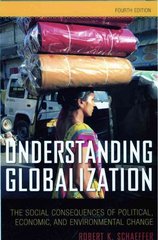Question
:Answer all questions. An increase in price will result in no change in total revenue if: A) the percentage change in price is large enough
:Answer all questions.
An increase in price will result in no change in total revenue if:
A) the percentage change in price is large enough to cause quantity demanded to fall to zero.
B) the coefficient of elasticity is equal to zero.
C) the percentage change in quantity demanded is equal to the percentage change in price .
D) the demand function is perfectly elastic.
Assume the demand for a good is price inelastic, i.e., ed
This means that if price decreases by 50 percent, quantity demanded will: *
A) increase by more than 50 percent.
B) decrease by more than 50 percent.
C) increase by less than 50 percent.
D) decrease by less than 50 percent.
As the percentage of the consumer's income accounted for by a particular good decreases, demand for the good will:
A) tend to become more price elastic.
B) tend to become more price inelastic.
C) tend to become closer to unit elastic.
D) tend toward being perfectly elastic.
For an inferior good, the income elasticity of demand is:
A) positive or negative depending on the share of income accounted for by the good.
B) always negative
C) positive if income increases and negative when income declines.
D) always equal to 1.
Supply is best defined as the relationship between:
A) the current price of a good and the quantity supplied at that price.
B) the price of a good or service and the quantity supplied by producers at each price during a period of time.
C) the cost of producing a good and the price consumers are willing to pay for it.
D) the quantity supplied and the price people are willing to pay for a good.
Which of the following would cause a change in supply, as opposed to a change in quantity supplied, in the market for purchasing new homes?
A) A decrease in the price of rental housing.
B) A decrease in the price of new homes
C) An increase in the incomes of home buyers.
D) An increase in the number of buyers in the market for used homes.
Many people consider lentils to be an inferior good. For such people, all else held constant, an increase in income would cause their demand for lentils to:
A) increase.
B) stay the same.
C) decrease.
D) cannot be determined with the information given.
Suppose the demand for good X is given by Q_x^d = 300 - 15Px + 20Py - 60I , where Px is the price of good X. Py is the price of some other good Y, and I is income. Assume that Px is currently $50, Py is currently $100, and I is currently $1200
A) Goods X and Y are complement goods
B) The supply is elastic
C) Good Y is a normal good
D) Good X is an inferior good
The price elasticity of demand is calculated as:
A) the change in price divided by the change in quantity demanded.
B) the change in quantity demanded divided by the change in price.
C) the percentage change in price divided by the percentage change in quantity demanded.
D) the percentage change in quantity demanded divided by the percentage change in price.



Step by Step Solution
There are 3 Steps involved in it
Step: 1

Get Instant Access to Expert-Tailored Solutions
See step-by-step solutions with expert insights and AI powered tools for academic success
Step: 2

Step: 3

Ace Your Homework with AI
Get the answers you need in no time with our AI-driven, step-by-step assistance
Get Started


